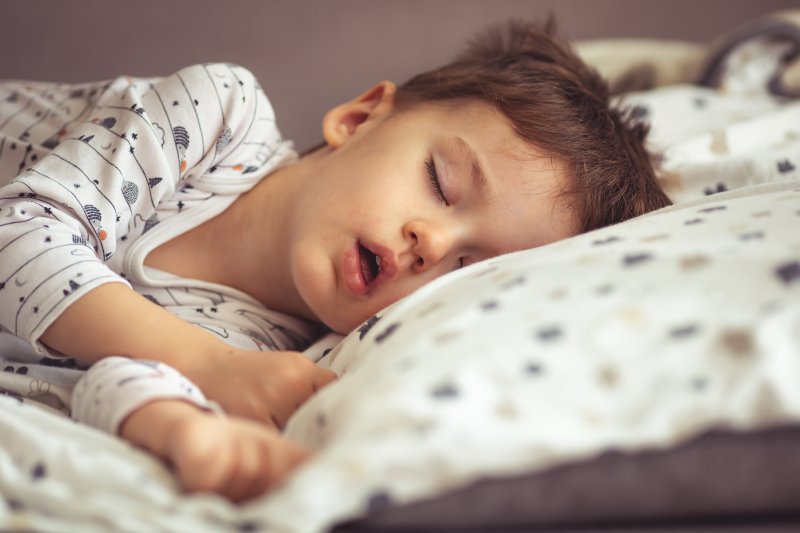
When you think of a person with sleep apnea, you likely picture an adult male who is overweight. The truth is that sleep apnea affects a much wider pool of people, and they aren’t just adults. Children also suffer from sleep disorders, like sleep-disordered breathing. When they aren’t getting the quality sleep they need at night, it’s nearly impossible to thrive during the day. Continue reading to learn more about sleep apnea in children and pediatric airway development.
What Is Pediatric Sleep Disordered Breathing (SDB)?
When a child’s airway becomes blocked as they sleep, they can stop breathing. This lowers the oxygen levels in the body, triggering the child to wake up and take a breath. This is called “obstructive sleep apnea,” and is by far the most common type of sleep-disordered breathing. This may happen for a few seconds at a time and occur multiple times during a sleep cycle.
In children, SDB can cause a variety of different issues, including increased decay, behavioral issues, deficient lower jaw growth, and chronic sinusitis. Kids with SDB are associated with 40-60% more behavioral difficulties between the ages of 4-7 years old.
What Are the Signs & Symptoms of SDB?
There are a variety of signs that could indicate sleep-disordered breathing in children. Here are the most prominent:
- Teeth grinding
- Loud snoring
- Daytime sleepiness
- Hyperactivity
- Poor impulse control
- Sleepwalking
- Delayed bed-wetting
- Acid reflux
- Restless leg syndrome
- Overbite/crowding of the teeth
- Anxiety & attention disorders
SDB in Adults vs. Children
Sleep disorders manifest differently in adults than children. For instance, adults are more likely to experience daytime fatigue and sleepiness, while children show behavioral issues, like difficulty concentrating and hyperactivity.
The treatment for SDB in children is also different than in adults. This is due to the number of developmental characteristics that distinguish the pediatric airway from the adult airway. Until puberty, children’s faces and airways are malleable, so the way they grow can be changed. Ultimately, the goal of treatment for adults is to improve their quality of life. The goal of treating children is to guide their growth so they can be happy, healthy adults. Treatment is personalized around each individual to meet their unique needs.
If you think that your child may have sleep-disordered breathing, getting them the treatment they need can help them to thrive better during the day. By addressing issues now, you can set them up for success as an adult!
About the Practice
At Sprout Dentistry for Kids of McKinney, Dr. Justin and Dr. Sage work together to treat even the smallest of patients in the McKinney community. With their combined experience and expertise, your child can get pretty much everything they need at one convenient location. To learn more about sleep-disordered breathing or to schedule an appointment, visit their website or call (469) 301-3212.
